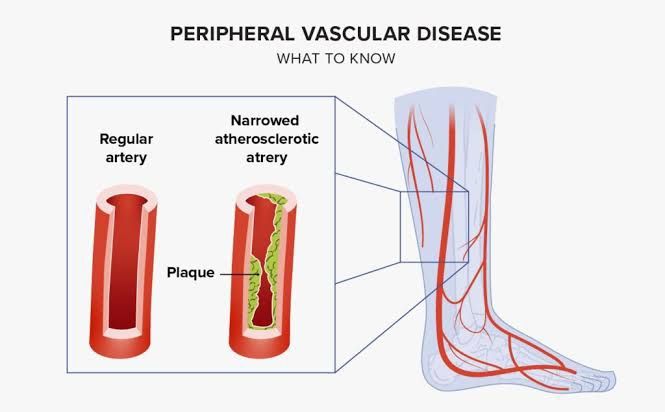
Definition of Peripheral Vascular Disease
Peripheral vascular disease is a term used to describe the narrowing or blockage of blood vessels caused by plaque buildup, also known as atherosclerosis. Plaque is made up of fat, cholesterol, calcium, and other substances found in the blood. As plaque builds up, the blood vessels narrow, reducing blood flow to the limbs and other organs. This can lead to various symptoms and complications, including pain, cramping, infections, and in severe cases, gangrene and limb loss.
Signs and Symptoms
The signs and symptoms of PVD can vary depending on the severity of the disease and the affected blood vessels. Common symptoms include:
- Leg pain or cramping, often triggered by walking or exercising and relieved by rest (claudication)
- Numbness, tingling, or weakness in the legs
- Coldness or discoloration in the feet or legs
- Sores or wounds on the toes, feet, or legs that heal slowly or not at all
- Hair loss or slow hair growth on the legs
- Shiny, smooth skin on the legs
- Weak or absent pulses in the legs or feet
Investigations
Diagnosing PVD involves a series of tests and examinations to assess the condition of the blood vessels and the presence of any blockages or narrowing. These investigations may include:
- Ankle-brachial index (ABI): A simple, non-invasive test that compares the blood pressure in the ankles to the blood pressure in the arms. A lower ABI indicates narrowed or blocked blood vessels.
- Doppler ultrasound: A painless, non-invasive test that uses sound waves to create images of the blood vessels and assess blood flow.
- Computed tomography angiography (CTA) or magnetic resonance angiography (MRA): Non-invasive imaging tests that provide detailed images of the blood vessels and can help identify blockages or narrowing.
- Angiography: A minimally invasive procedure that involves injecting a dye into the blood vessels and taking X-rays to visualize the blood flow.
Management
The management of PVD focuses on improving blood flow, reducing symptoms, and preventing further progression of the disease. Treatment options may include:
- Lifestyle modifications: Adopting a heart-healthy lifestyle can help manage PVD and reduce the risk of complications. This includes quitting smoking, exercising regularly, maintaining a healthy weight, and eating a balanced diet low in saturated fats, trans fats, and cholesterol.
- Medications: Various medications can be used to treat PVD, including blood thinners to prevent clots, cholesterol-lowering drugs to reduce plaque buildup, and medications to manage pain and improve blood flow.
- Angioplasty and stenting: Minimally invasive procedures that involve inserting a catheter into the blood vessels, guiding it to the site of the blockage, and using a balloon or stent to widen the blood vessel and improve blood flow.
- Bypass surgery: A surgical procedure that involves rerouting blood flow around a blocked or narrowed blood vessel using a graft made from a vein or synthetic material.
- Amputation: In severe cases, when other treatments have failed or are not an option, amputation may be necessary to remove a limb affected by gangrene or tissue death.
Conclusion
Peripheral vascular disease is a serious medical condition that can significantly impact an individual’s quality of life and overall health. Early diagnosis and treatment are crucial for managing the disease and preventing complications. By understanding the definition, signs and symptoms, investigations, and management options for PVD, individuals can take proactive steps to protect their vascular health and maintain a healthy, active lifestyle. Regular check-ups and consultations with healthcare professionals are also essential for monitoring PVD progression and adjusting treatment plans as needed.







